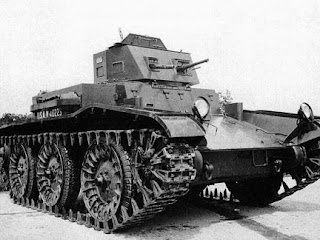The house built parallel to the embankment of the river Volga, Prior to the war, the four story building Pavlov’s House had served as a residential building for employees of the regional consumer union. It was considered one of the most prestigious apartment complexes of Stalingrad, as it overlooked 9 January Square.
The beginning of the war in Russia came as a surprise to the Soviet government, even though they had been repeatedly warned by other countries that Nazi Germany was planning an attack on Russia.
The German offensive to capture Stalingrad began on 23 August 1942, using the German 6th Army and elements of the 4th Panzer Army. In this new form of urban warfare, frontlines were constantly shifting block by block, and every building was a fortress waiting to be stormed. One of the most notable of these urban strongholds was given the moniker "Pavlov's House."
In September 1942, the house was attacked by German soldiers, and a platoon of the Soviet 13th Guards Rifle Division was ordered to seize and defend it.
Captured by Red Army Sergeant Jacob Pavlov, a low-level noncommissioned officer in the last weekend of September, the house allowing the defenders to observe and fire into German occupied territory.
The building was not just important because it stuck into German defenses , but for the fact that a grain mill converted into a Soviet command post and staging ground was only 300 yards into Soviet lines behind the house.
This allowed for constant communication between the observation stronghold and Soviet HQ. All of these factors of course made the house a constant target for German offensives, which is where the fame of Sergeant Pavlov and his defense originates.
In keeping with Stalin's Order No. 227 - "not one step back", Sgt. Pavlov was ordered to fortify the building and defend it to the last bullet and the last man. Taking this advice to heart, Pavlov ordered the building to be surrounded with four layers of barbed wire and minefields, and set up machine-gun posts in every available window facing the square.
From their vantage point, they could strike at the Panzers with impunity. They were not only a symbol of the resistance against the Germans, but they were also proven deadly. The Germans would routinely attempt to take the house almost daily, only to fail every time. Pavlov’s House stood for fifty-eight days, until the defenders and the civilians found hiding in the basement were finally relieved in November.
The beginning of the war in Russia came as a surprise to the Soviet government, even though they had been repeatedly warned by other countries that Nazi Germany was planning an attack on Russia.
The German offensive to capture Stalingrad began on 23 August 1942, using the German 6th Army and elements of the 4th Panzer Army. In this new form of urban warfare, frontlines were constantly shifting block by block, and every building was a fortress waiting to be stormed. One of the most notable of these urban strongholds was given the moniker "Pavlov's House."
In September 1942, the house was attacked by German soldiers, and a platoon of the Soviet 13th Guards Rifle Division was ordered to seize and defend it.
Captured by Red Army Sergeant Jacob Pavlov, a low-level noncommissioned officer in the last weekend of September, the house allowing the defenders to observe and fire into German occupied territory.
The building was not just important because it stuck into German defenses , but for the fact that a grain mill converted into a Soviet command post and staging ground was only 300 yards into Soviet lines behind the house.
This allowed for constant communication between the observation stronghold and Soviet HQ. All of these factors of course made the house a constant target for German offensives, which is where the fame of Sergeant Pavlov and his defense originates.
In keeping with Stalin's Order No. 227 - "not one step back", Sgt. Pavlov was ordered to fortify the building and defend it to the last bullet and the last man. Taking this advice to heart, Pavlov ordered the building to be surrounded with four layers of barbed wire and minefields, and set up machine-gun posts in every available window facing the square.
From their vantage point, they could strike at the Panzers with impunity. They were not only a symbol of the resistance against the Germans, but they were also proven deadly. The Germans would routinely attempt to take the house almost daily, only to fail every time. Pavlov’s House stood for fifty-eight days, until the defenders and the civilians found hiding in the basement were finally relieved in November.






























